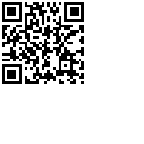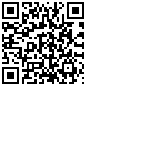class: center, middle, inverse, title-slide # The emeScheme - an Introduction ## What is it?<br/>What is it for?<br/>Why do we need it? <html> <div style="float:left"> </div> <hr color='#EB811B' size=1px width=796px> </html> ### Rainer M Krug ### Group Seminar 18/12/2018<br/>(updated: 2018-12-17) --- class: inverse, center, middle, animated, fadeIn <style type="text/css"> /* custom.css */ .title-slide.remark-slide-content:before{ position: absolute; bottom: 0; left: 0; content:url(https://zenodo.org/badge/DOI/10.5281/zenodo.2244999.svg); height:60px; } .left-code { color: #777; width: 38%; height: 92%; float: left; } .right-plot { width: 60%; float: right; padding-left: 1%; } .plot-callout { height: 225px; width: 450px; bottom: 5%; right: 5%; position: absolute; padding: 0px; z-index: 100; } .plot-callout img { width: 100%; border: 4px solid #23373B; } .middle-text { color: #777; width: 30%; height: 100%; float: middle; } .left-text { color: #777; width: 30%; height: 100%; float: left; } .right-text { color: #777; width: 30%; height: 100%; float: right; } .scroll { background: #FFBB33; width: 100%; height: 80%; overflow-x: scroll; overflow-y: scroll; padding-right: 1px; padding-bottom: 1px; } .dt { font-size: 11px; } </style> # What is the emeScheme? --- class: left, top, animated, fadeIn ## What is it? - metadata **Scheme** - for **E**cological **M**icrocosm **E**xperiments -- <html><div style='float:left'></div><hr color='#EB811B' size=1px width=796px></html> ## What does this metada scheme do? - standardised structure - standardised terminology / property names - to describe the an Ecological Microcosm Experiment -- <html><div style='float:left'></div><hr color='#EB811B' size=1px width=796px></html> ## What is the metadata? - Materials - Conditions / Manipulations - Measuring - Data conversions --- class: inverse, center, middle, animated, fadeIn # Why do we need it? --- class: animated, fadeIn ## Data Life Cylce .center[ <img src="figs/data_life_cycle_1.svg" width="600"> ] Adapted from https://www.dataone.org/data-life-cycle ??? - **Plan**: description of the data that will becompiled, and how the data will be managed and made accessible throughout its lifetime - **Collect**: observations are made either by hand or with sensors or other instruments and the data are placed a into digital form - **Assure**: the quality of the data are assured through checks and inspections - **Analyze**: data are analyzed <html><div style='float:left'></div><hr color='#EB811B' size=1px width=796px></html> - **Preserve**: data are submitted to an appropriate long-term archive (i.e. data center) - **Discover**: potentially useful data are located and obtained, along with the relevant information about the data - **Integrate**: data from disparate sources are combined to form one homogeneous set of data that can be readily analyzed - **Describe**: data are accurately and thoroughly described using the appropriate metadata standards (metadata) --- class: animated, fadeIn ## Data Life Cylce .center[ <img src="figs/data_life_cycle_2.svg" width="600"> ] Adapted from https://www.dataone.org/data-life-cycle ??? - **Plan**: description of the data that will becompiled, and how the data will be managed and made accessible throughout its lifetime - **Collect**: observations are made either by hand or with sensors or other instruments and the data are placed a into digital form - **Assure**: the quality of the data are assured through checks and inspections - **Describe**: data are accurately and thoroughly described using the appropriate metadata standards - **Preserve**: data are submitted to an appropriate long-term archive (i.e. data center) - **Discover**: potentially useful data are located and obtained, along with the relevant information about the data (metadata) - **Integrate**: data from disparate sources are combined to form one homogeneous set of data that can be readily analyzed - **Analyze**: data are analyzed --- class: left, top, animated, fadeIn ## Why do we want this? - Data should be archived - Data should be findable - Data is Re-usable - We can re-use other data -- - Data should not disappear -- <html><div style='float:left'></div><hr color='#EB811B' size=1px width=796px></html> - Data should be FAIR --- class: animated, fadeIn ## What is FAIR? - **F**indable - **A**ccessible - **I**nteroperable - **R**e-usable See [https://www.force11.org/group/fairgroup/fairprinciples](https://www.force11.org/group/fairgroup/fairprinciples) for a detailed description. ??? - To be Findable: - F1. (meta)data are assigned a globally unique and eternally persistent identifier. - F2. data are described with rich metadata. - F3. (meta)data are registered or indexed in a searchable resource. - F4. metadata specify the data identifier. - TO BE ACCESSIBLE: - A1 (meta)data are retrievable by their identifier using a standardized communications protocol. - A1.1 the protocol is open, free, and universally implementable. - A1.2 the protocol allows for an authentication and authorization procedure, where necessary. - A2 metadata are accessible, even when the data are no longer available. - TO BE INTEROPERABLE: - I1. (meta)data use a formal, accessible, shared, and broadly applicable language for knowledge representation. - I2. (meta)data use vocabularies that follow FAIR principles. - I3. (meta)data include qualified references to other (meta)data. - TO BE RE-USABLE: - R1. meta(data) have a plurality of accurate and relevant attributes. - R1.1. (meta)data are released with a clear and accessible data usage license. - R1.2. (meta)data are associated with their provenance. - R1.3. (meta)data meet domain-relevant community standards. --- class: inverse, center, middle, animated, fadeIn # We need the emeScheme! --- class: animated, fadeIn background-image: url(figs/data_layout_1.svg) background-position: center background-size: contain -- .left-text[ ## Data Levels - Raw Data - videos - images - count data from manual count - Extracted data - bemovi - extracted size distributions - extracted count / density data ] --- class: animated, fadeIn background-image: url(figs/data_layout_2.svg) background-position: center background-size: contain .right-text[ ## Metadata levels - Experiment ] --- class: animated, fadeIn background-image: url(figs/data_layout_3.svg) background-position: center background-size: contain .right-text[ ## Metadata levels - Experiment - Treatment ] --- class: animated, fadeIn background-image: url(figs/data_layout_4.svg) background-position: center background-size: contain .right-text[ ## Metadata levels - Experiment - Treatment - Sampling ] --- class: animated, fadeIn background-image: url(figs/data_layout_5.svg) background-position: center background-size: contain .right-text[ ## Metadata levels - Experiment - Treatment - Sampling - Measurement <span>⇒</span> **Raw Data** ] --- class: animated, fadeIn background-image: url(figs/data_layout_6.svg) background-position: center background-size: contain .right-text[ ## Metadata levels - Experiment - Treatment - Sampling - Measurement <span>⇒</span> **Raw Data** - Data DataExtraction <span>⇒</span> **Extracted Data** ] --- class: animated, fadeIn background-image: url(figs/data_layout_6.svg) background-position: center background-size: contain .left-text[ ## Data Levels - Raw Data - videos - images - count data from manual count - Extracted data - bemovi - extracted size distributions - extracted count / density data ] .right-text[ ## Metadata levels - Experiment - Treatment - Sampling - Measurement <span>⇒</span> **Raw Data** - Data DataExtraction <span>⇒</span> **Extracted Data** ] --- class: animated, fadeIn .dt[ <div id="htmlwidget-c43c346b008b15c325e5" style="width:100%;height:600px;" class="datatables html-widget"></div> <script type="application/json" data-for="htmlwidget-c43c346b008b15c325e5">{"x":{"filter":"none","data":[["1","2","3","4","5"],["Experiment","Treatment","Sampling","Measuring","DataExtraction"]],"container":"<table class=\"cell-border stripe\">\n <thead>\n <tr>\n <th> <\/th>\n <th>Property_Level_1<\/th>\n <\/tr>\n <\/thead>\n<\/table>","options":{"pageLength":18,"dom":"tip","ordering":false,"order":[],"autoWidth":false,"orderClasses":false,"columnDefs":[{"orderable":false,"targets":0}],"lengthMenu":[10,18,25,50,100]}},"evals":[],"jsHooks":[]}</script> ] --- class: animated, fadeIn .dt[ <div id="htmlwidget-52a8044d6d816e1d38da" style="width:100%;height:600px;" class="datatables html-widget"></div> <script type="application/json" data-for="htmlwidget-52a8044d6d816e1d38da">{"x":{"filter":"none","data":[["1","2","3","4","5","6","7","8","9","10","11","12","13","14","15","16","17","18","19","20","21","22","23","24","25","26","27","28","29","30","31","32","33","34","35","36","37","38","39"],["Experiment",null,null,null,"Treatment",null,null,null,null,null,null,null,null,null,null,"Sampling",null,null,null,"Measuring",null,null,null,null,null,null,null,"DataExtraction",null,null,null,null,null,null,null,null,null,null,null],[null,"ExperimentalDesign","Materials","Initialization",null,"DuringExperimentMaintenance","SpeciesTreatment","BacteriaFlagellatesTreatment","TemperatureTreatment","LightTreatment","Dispersal","NutrientTreatment","Viscosity","BioticEnvironment","Disturbance",null,"frequency (daysBetweenSamples) [numeric]","volume (ml) [numeric]","replacementMediumType",null,"Microscopy","VideoRecording","FlowCam","BacterialDensityFlowcytometry","DNABarcoding","Respirometry","NutrientsDecomposition",null,"MicroscopyAnalysis","VideoAnalysis","FlowCamAnalysis","BacterialDensityFlowcytometryAnalysis","ParticleCounterAnalysis","RamanMicrospectroscopyAnalysis","DNABarcodingAnalysis","GenProteoEpigenomicsAnalysis","RespirometryAnalysis","NutrientsDecompositionAnalysis","InteractionsAnalysis"]],"container":"<table class=\"cell-border stripe\">\n <thead>\n <tr>\n <th> <\/th>\n <th>Property_Level_1<\/th>\n <th>Property_Level_2<\/th>\n <\/tr>\n <\/thead>\n<\/table>","options":{"pageLength":18,"dom":"tip","ordering":false,"order":[],"autoWidth":false,"orderClasses":false,"columnDefs":[{"orderable":false,"targets":0}],"lengthMenu":[10,18,25,50,100]}},"evals":[],"jsHooks":[]}</script> ] --- class: animated, fadeIn .dt[ <div id="htmlwidget-ebff619fb20629630e93" style="width:100%;height:600px;" class="datatables html-widget"></div> <script type="application/json" data-for="htmlwidget-ebff619fb20629630e93">{"x":{"filter":"none","data":[["1","2","3","4","5","6","7","8","9","10","11","12","13","14","15","16","17","18","19","20","21","22","23","24","25","26","27","28","29","30","31","32","33","34","35","36","37","38","39","40","41","42","43","44","45","46","47","48","49","50","51","52","53","54","55","56","57","58","59","60","61","62","63","64","65","66","67","68","69","70","71","72","73","74","75","76","77","78","79","80","81","82","83","84","85","86","87","88","89","90","91","92","93","94","95","96","97","98","99","100","101","102","103","104","105","106","107","108","109","110","111","112","113","114","115","116","117","118","119","120","121","122","123","124","125","126","127","128","129","130","131","132","133","134","135","136"],["Experiment",null,null,null,null,null,null,null,null,null,null,null,null,null,null,null,null,null,null,null,"Treatment",null,null,null,null,null,null,null,null,null,null,null,null,null,null,null,null,null,null,null,null,null,null,null,null,null,null,null,null,null,null,null,null,null,null,null,null,"Sampling",null,null,null,"Measuring",null,null,null,null,null,null,null,null,null,null,null,null,null,null,null,null,null,null,null,null,null,null,null,null,null,null,null,null,null,null,null,null,null,null,null,null,null,null,null,null,"DataExtraction",null,null,null,null,null,null,null,null,null,null,null,null,null,null,null,null,null,null,null,null,null,null,null,null,null,null,null,null,null,null,null,null,null],[null,"ExperimentalDesign",null,null,null,"Materials",null,null,null,null,null,null,null,null,null,"Initialization",null,null,null,null,null,"DuringExperimentMaintenance",null,null,"SpeciesTreatment",null,null,null,null,"BacteriaFlagellatesTreatment",null,null,null,"TemperatureTreatment",null,null,null,"LightTreatment",null,null,null,"Dispersal",null,null,"NutrientTreatment",null,null,"Viscosity",null,null,"BioticEnvironment",null,null,null,"Disturbance",null,null,null,"frequency (daysBetweenSamples) [numeric]","volume (ml) [numeric]","replacementMediumType",null,"Microscopy",null,null,null,null,null,"VideoRecording",null,null,null,null,null,null,null,null,null,null,null,null,null,null,"FlowCam",null,null,null,null,"BacterialDensityFlowcytometry",null,null,null,null,"DNABarcoding",null,null,"Respirometry",null,null,"NutrientsDecomposition",null,null,null,"MicroscopyAnalysis",null,null,"VideoAnalysis",null,null,"FlowCamAnalysis",null,null,"BacterialDensityFlowcytometryAnalysis",null,null,"ParticleCounterAnalysis",null,null,"RamanMicrospectroscopyAnalysis",null,null,"DNABarcodingAnalysis",null,null,"GenProteoEpigenomicsAnalysis",null,null,"RespirometryAnalysis",null,null,"NutrientsDecompositionAnalysis",null,null,"InteractionsAnalysis",null,null],[null,null,"noTreatments (count) [integer]","noReplicatesPerTreatment (count) [integer]","description",null,"Incubators","Container","Shakers","Species","CultureMedium","BacteriaFlagellates","LabPractices","LongTermMaintenance","LongTermPreservation",null,"InitialConditions","Temperature","Light","FinalConditions",null,null,"description","comment",null,"species","initialDensity (cells/ml) [numeric]","densityChanges","ecologicalRoleInTreatment",null,"species","initial density","densityChanges",null,"temperature (C) [numeric]","temperatureRange (C)","temperatureChangeRate",null,"intensity (lx) [numeric]","colour (nm) [numeric]","photoperiod (h) [numeric]",null,"spatialStructure","change",null,"changeInTreatment","comment",null,"description","comment",null,"type","value","change",null,"description","comment",null,null,null,null,null,null,"volume (ml) [numeric]","preparation","typeOfMicroscope","microscopyMethod","comment (e.g.Species)",null,"volume (ml) [numeric]","preparation","microscope","magnification","camera","microscopyMethod","resolution","colourSpace","lengthOfRecording (sec) [numeric]","frameRate (perSecond) [integer]","lightIntensity (lx) [numeric]","lightColour (nm) [numeric]","videoFormat","comment (e.g.species)",null,"makeTypeVersion","settings Parameter","volume (ml) [numeric]","treatment",null,"typeVersion","volume (ml) [numeric]","settingsParameter","treatment",null,"description","comment",null,"description","moreDetailsNeeded",null,"description (Yves)","comment",null,null,"description","comment",null,"analysisMethod","parameterUsed",null,"description","comment",null,"description","comment",null,"description","comment",null,"description","comment",null,"description","comment",null,"description","comment",null,"description","comment",null,"description","comment",null,"description","comment"]],"container":"<table class=\"cell-border stripe\">\n <thead>\n <tr>\n <th> <\/th>\n <th>Property_Level_1<\/th>\n <th>Property_Level_2<\/th>\n <th>Property_Level_3<\/th>\n <\/tr>\n <\/thead>\n<\/table>","options":{"pageLength":18,"dom":"tip","ordering":false,"order":[],"autoWidth":false,"orderClasses":false,"columnDefs":[{"orderable":false,"targets":0}],"lengthMenu":[10,18,25,50,100]}},"evals":[],"jsHooks":[]}</script> ] --- class: animated, fadeIn .dt[ <div id="htmlwidget-af7fb01150237ac51481" style="width:100%;height:600px;" class="datatables html-widget"></div> <script>HTMLWidgets.pymChild = new pym.Child();HTMLWidgets.addPostRenderHandler(function(){ setTimeout(function(){HTMLWidgets.pymChild.sendHeight();},100); });</script> <script type="application/json" data-for="htmlwidget-af7fb01150237ac51481">{"x":{"filter":"none","data":[["1","2","3","4","5","6","7","8","9","10","11","12","13","14","15","16","17","18","19","20","21","22","23","24","25","26","27","28","29","30","31","32","33","34","35","36","37","38","39","40","41","42","43","44","45","46","47","48","49","50","51","52","53","54","55","56","57","58","59","60","61","62","63","64","65","66","67","68","69","70","71","72","73","74","75","76","77","78","79","80","81","82","83","84","85","86","87","88","89","90","91","92","93","94","95","96","97","98","99","100","101","102","103","104","105","106","107","108","109","110","111","112","113","114","115","116","117","118","119","120","121","122","123","124","125","126","127","128","129","130","131","132","133","134","135","136","137","138","139","140","141","142","143","144","145","146","147","148","149","150","151","152","153","154","155","156","157","158","159","160","161","162","163","164","165","166","167","168"],["Experiment",null,null,null,null,null,null,null,null,null,null,null,null,null,null,null,null,null,null,null,null,null,null,null,null,null,null,null,null,null,null,null,null,null,null,null,null,null,null,null,null,null,null,null,null,null,null,null,null,null,null,null,"Treatment",null,null,null,null,null,null,null,null,null,null,null,null,null,null,null,null,null,null,null,null,null,null,null,null,null,null,null,null,null,null,null,null,null,null,null,null,"Sampling",null,null,null,"Measuring",null,null,null,null,null,null,null,null,null,null,null,null,null,null,null,null,null,null,null,null,null,null,null,null,null,null,null,null,null,null,null,null,null,null,null,null,null,null,null,null,"DataExtraction",null,null,null,null,null,null,null,null,null,null,null,null,null,null,null,null,null,null,null,null,null,null,null,null,null,null,null,null,null,null,null,null,null],[null,"ExperimentalDesign",null,null,null,"Materials",null,null,null,null,null,null,null,null,null,null,null,null,null,null,null,null,null,null,null,null,null,null,null,null,null,null,null,null,null,null,null,"Initialization",null,null,null,null,null,null,null,null,null,null,null,null,null,null,null,"DuringExperimentMaintenance",null,null,"SpeciesTreatment",null,null,null,null,"BacteriaFlagellatesTreatment",null,null,null,"TemperatureTreatment",null,null,null,"LightTreatment",null,null,null,"Dispersal",null,null,"NutrientTreatment",null,null,"Viscosity",null,null,"BioticEnvironment",null,null,null,"Disturbance",null,null,null,"frequency (daysBetweenSamples) [numeric]","volume (ml) [numeric]","replacementMediumType",null,"Microscopy",null,null,null,null,null,"VideoRecording",null,null,null,null,null,null,null,null,null,null,null,null,null,null,"FlowCam",null,null,null,null,"BacterialDensityFlowcytometry",null,null,null,null,"DNABarcoding",null,null,"Respirometry",null,null,"NutrientsDecomposition",null,null,null,"MicroscopyAnalysis",null,null,"VideoAnalysis",null,null,"FlowCamAnalysis",null,null,"BacterialDensityFlowcytometryAnalysis",null,null,"ParticleCounterAnalysis",null,null,"RamanMicrospectroscopyAnalysis",null,null,"DNABarcodingAnalysis",null,null,"GenProteoEpigenomicsAnalysis",null,null,"RespirometryAnalysis",null,null,"NutrientsDecompositionAnalysis",null,null,"InteractionsAnalysis",null,null],[null,null,"noTreatments (count) [integer]","noReplicatesPerTreatment (count) [integer]","description",null,"Incubators",null,null,"Container",null,null,null,"Shakers",null,null,"Species",null,null,null,null,"CultureMedium",null,null,"BacteriaFlagellates",null,null,null,"LabPractices",null,null,"LongTermMaintenance",null,null,"LongTermPreservation",null,null,null,"InitialConditions",null,null,"Temperature",null,null,null,"Light",null,null,null,"FinalConditions",null,null,null,null,"description","comment",null,"species","initialDensity (cells/ml) [numeric]","densityChanges","ecologicalRoleInTreatment",null,"species","initial density","densityChanges",null,"temperature (C) [numeric]","temperatureRange (C)","temperatureChangeRate",null,"intensity (lx) [numeric]","colour (nm) [numeric]","photoperiod (h) [numeric]",null,"spatialStructure","change",null,"changeInTreatment","comment",null,"description","comment",null,"type","value","change",null,"description","comment",null,null,null,null,null,null,"volume (ml) [numeric]","preparation","typeOfMicroscope","microscopyMethod","comment (e.g.Species)",null,"volume (ml) [numeric]","preparation","microscope","magnification","camera","microscopyMethod","resolution","colourSpace","lengthOfRecording (sec) [numeric]","frameRate (perSecond) [integer]","lightIntensity (lx) [numeric]","lightColour (nm) [numeric]","videoFormat","comment (e.g.species)",null,"makeTypeVersion","settings Parameter","volume (ml) [numeric]","treatment",null,"typeVersion","volume (ml) [numeric]","settingsParameter","treatment",null,"description","comment",null,"description","moreDetailsNeeded",null,"description (Yves)","comment",null,null,"description","comment",null,"analysisMethod","parameterUsed",null,"description","comment",null,"description","comment",null,"description","comment",null,"description","comment",null,"description","comment",null,"description","comment",null,"description","comment",null,"description","comment",null,"description","comment"],[null,null,null,null,null,null,null,"makeTypeVersion","comment",null,"type","volume (ml) [numeric]","covers",null,"makeTypeVersion","speed (rpm) [integer]",null,"species","strain","source","density (cells/ml) [numeric]",null,"volume (ml) [numeric]","type",null,"species","strain","sourcePellet",null,"description","comment",null,"description","comment",null,"description","comment",null,null,"description","runInTime (hours) [integer]",null,"temperature (C) [numeric]","temperatureRange (C)","temperatureChangeRate",null,"intensity (lx) [numeric]","colour (nm) [integer]","photoperiod (h) [numeric]",null,"description","comment",null,null,null,null,null,null,null,null,null,null,null,null,null,null,null,null,null,null,null,null,null,null,null,null,null,null,null,null,null,null,null,null,null,null,null,null,null,null,null,null,null,null,null,null,null,null,null,null,null,null,null,null,null,null,null,null,null,null,null,null,null,null,null,null,null,null,null,null,null,null,null,null,null,null,null,null,null,null,null,null,null,null,null,null,null,null,null,null,null,null,null,null,null,null,null,null,null,null,null,null,null,null,null,null,null,null,null,null,null,null,null,null,null,null,null,null]],"container":"<table class=\"cell-border stripe\">\n <thead>\n <tr>\n <th> <\/th>\n <th>Property_Level_1<\/th>\n <th>Property_Level_2<\/th>\n <th>Property_Level_3<\/th>\n <th>Property_Level_4<\/th>\n <\/tr>\n <\/thead>\n<\/table>","options":{"pageLength":18,"dom":"tip","ordering":false,"order":[],"autoWidth":false,"orderClasses":false,"columnDefs":[{"orderable":false,"targets":0}],"lengthMenu":[10,18,25,50,100]}},"evals":[],"jsHooks":[]}</script> ] --- class: animated, fadeIn background-image: url(figs/data_layout_6.svg) background-position: center background-size: contain .left-text[ ## Data Levels - Raw Data - videos - images - count data from manual count - Extracted data - bemovi - extracted size distributions - extracted count / density data ] .right-text[ ## Metadata levels - Experiment - Treatment - Sampling - Measurement <span>⇒</span> **Raw Data** - Data DataExtraction <span>⇒</span> **Extracted Data** ] --- class: animated, fadeIn, center, middle **Website** of the **emeScheme**: [https://exp-micro-ecol-hub.github.io/emeScheme/](https://exp-micro-ecol-hub.github.io/emeScheme/) <!-- --> **Presentation** at: [https://rkrug.github.io/emeScheme_Introduction/The_emeScheme.html](https://rkrug.github.io/emeScheme_Introduction/The_emeScheme.html) <!-- --> [](https://doi.org/10.5281/zenodo.2244999)